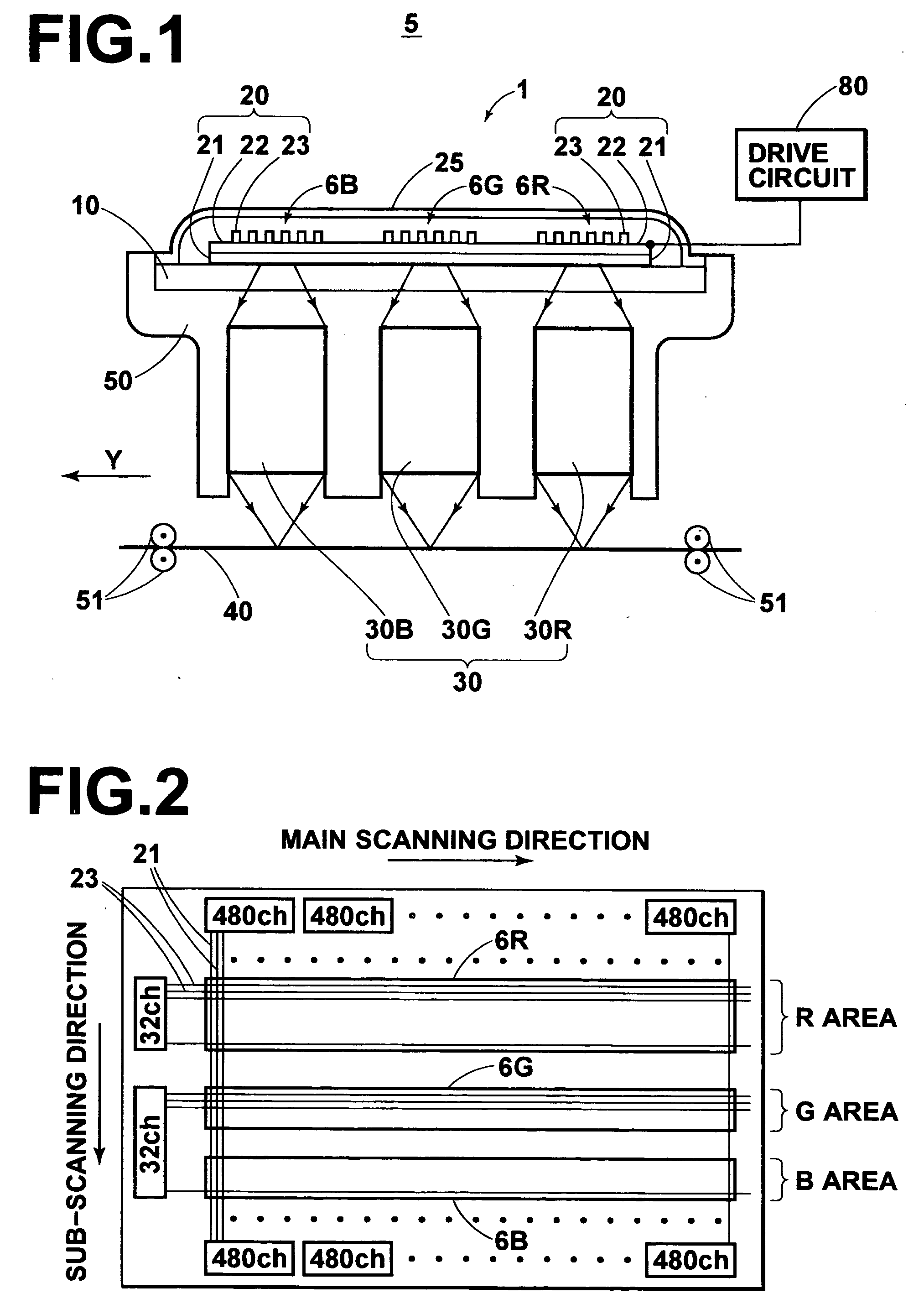Method of driving light emitting element array
a technology of light emitting elements and arrays, which is applied in the direction of process and machine control, optical radiation measurement, instruments, etc., can solve the problems of long time for the light emitting element, poor stability, and poor rise-up characteristics, and achieve excellent rise-up characteristics and suppress the effect of light emission and/or response fluctuation
- Summary
- Abstract
- Description
- Claims
- Application Information
AI Technical Summary
Benefits of technology
Problems solved by technology
Method used
Image
Examples
Embodiment Construction
[0038] As shown in FIG. 1, an exposure system 5 in accordance with an embodiment of the present invention has an exposure head 1. The exposure head 1 comprises a transparent base 10, a number of organic EL elements 20 formed on the base 10 by deposition, a refractive index profile type lens array 30 (30R, 30G and 30B) which is a unit system for imaging on a color photosensitive sheet 40 an image generated by the light emitted from the organic EL elements 20, and a support 50 which supports the base 10 and the refractive index profile type lens array 30.
[0039] The exposure system 5 further comprises, in addition to the exposure head 1, a sub-scanning means 51 in the form of, for instance, a pair of nip rollers which conveys the color photosensitive sheet 40 at a constant speed in a direction of arrow Y.
[0040] The organic EL elements 20 comprises a transparent anode 21, an organic compound layer 22 including a light emitting layer and patterned for each pixel and a metal cathode 23 ...
PUM
 Login to View More
Login to View More Abstract
Description
Claims
Application Information
 Login to View More
Login to View More - R&D
- Intellectual Property
- Life Sciences
- Materials
- Tech Scout
- Unparalleled Data Quality
- Higher Quality Content
- 60% Fewer Hallucinations
Browse by: Latest US Patents, China's latest patents, Technical Efficacy Thesaurus, Application Domain, Technology Topic, Popular Technical Reports.
© 2025 PatSnap. All rights reserved.Legal|Privacy policy|Modern Slavery Act Transparency Statement|Sitemap|About US| Contact US: help@patsnap.com



